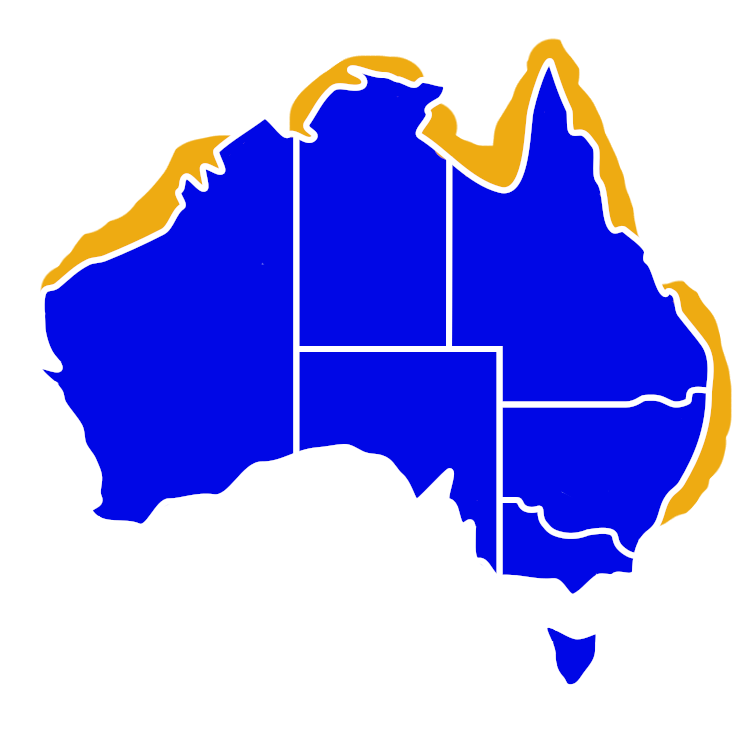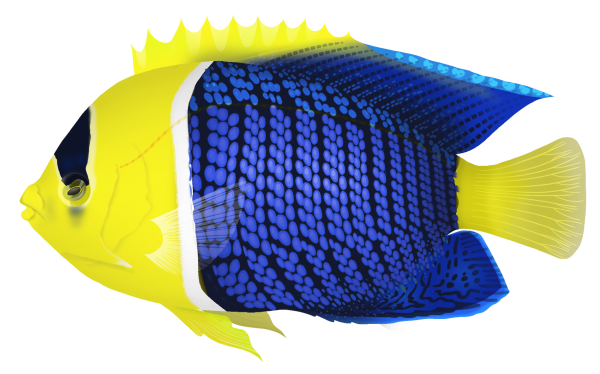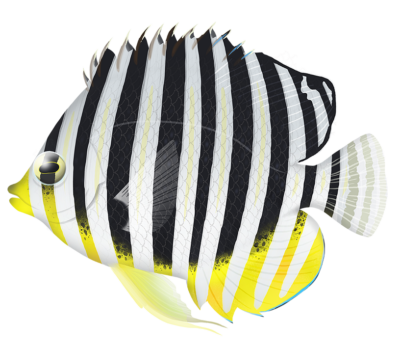Quick Facts
Distribution

Interesting Info
- The Bicolor Angelfish are a semi-aggressive fish and social behaviours are similar to most Angelfish as they are generally solitary but can be found in pairs. Young fish stay in the shallows whilst adults can be found in up to 25 m (82 ft).
- Bicolor Angelfish like many other angelfish are broadcast spawners, releasing their eggs and sperm towards the top of the water column or surface at dusk. The fertilised eggs then float with the current and eventually settle on the bottom.
- These fish are protogynous hermaphrodites, meaning that they can change sex. If the male of a harem dies, the dominant female of the bunch will change sex – this transformation lasts between 18 and 20 days.
- These fish are omnivores and primarily feed on algae and sponges, but also eat small prawns, zooplankton and plants.
- Estimates on lifespan have them reaching up to 15 years of age, although 12 years is the average.
- The main predators of angelfish include sharks, larger predatory fish and marine mammals.
Species Interaction
Aquarium & Reef
The Bicolor Angelfish is a dwarf Angelfish and very popular because if its stunning bright yellow and blue colours. They are one of the more aggressive of Angelfish and considered the most aggressive for the dwarf species.
The fish has a large range across the Indo-Pacific Ocean, including; parts of East Africa, Southern Japan, Fiji and Australia.
Scientific Classification
Kingdom: Animalia
Phylum: Chordata
Class: Actinopterygii
Order: Perciformes
Family: Pomacanthidae
Genus: Centropyge
Species: Centropyge bicolor
Conservation Status
Based on the International Union for Conservation of Nature (IUCN), the Bicolor Angelfish is currently categorised as “Least Concern”(LC).
LC is the lowest category on the scale for risk with “Extinct”(EX) being the highest.
Fish Taste Quality
Bicolor Angelfish are a edible fish but are not a targeted species for consumption.
Taste Rating: 0/5
How to catch
Bicolor Angelfish
Catch Difficulty: Easy
Tackle: Running Sinker Rig
Bait: Prawns, Sponge, Worms
Popularity: Not targeted
Bicolor Angelfish
As Aquarium Fish
Care Level: Moderate to difficult
Temperament: Aggressive
Diet: Omnivore
Reef Compatible: With caution
Minimum Tank Size: 70 gallons
Recreational Viewing
- Snorkeling & Scuba
Finding: Easy
Temperament: Semi-Aggressive
Danger: None





